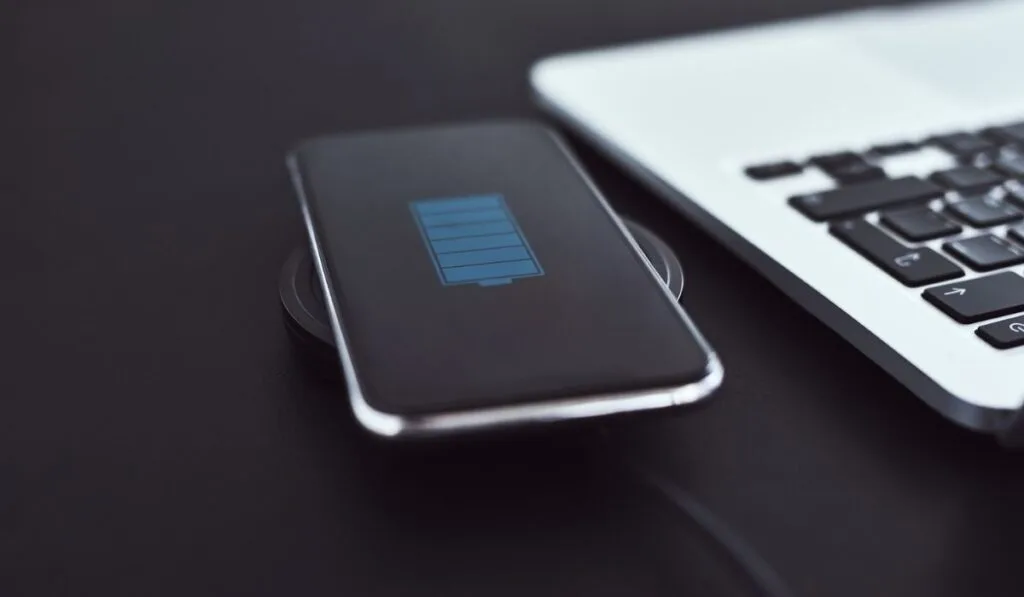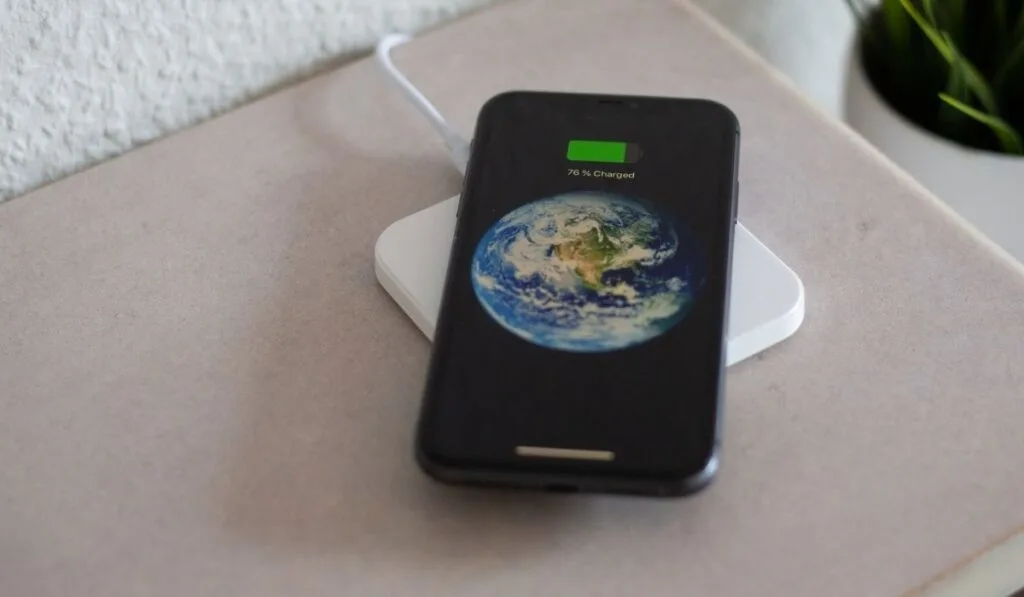While wireless chargers have become popular amongst tech enthusiasts, many are still opposed to their benefits. There have even been rumors that wireless chargers may damage your phone. But is this true?
Wireless chargers are safe and won’t damage your phone, as they must pass certain safety approvals before being released on the market. While they do heat up your phone, it’s well within the heat range that a compatible phone can handle, and this small amount of heat is expected.
Let’s look at how wireless chargers work and why you shouldn’t be worried that they will damage your phone. I’ll also look at some of the best wireless chargers in the market and discuss their power capacity and other features.
How Does Wireless Charging Work?

Wireless charging works with electromagnetic induction. Energy is transferred between electromagnetic coils between the charger and phone. Smartphones that support wireless charging have an internal coil connecting to the charger’s electromagnetic coil, which allows the battery to charge.
There are several types of wireless chargers that all work on the same general principle. However, some chargers enable you to charge your phone from a distance, while others will only charge the battery if the coils are aligned with the charger.
These wireless chargers include:
Tightly-Coupled Electromagnetic Inductive Chargers
Tightly-coupled wireless chargers were the first type released but also the most limited. This wireless charge will only work if the phone’s internal coils are perfectly aligned with the coils on the wireless charger. Some phones have markings to show the position of the inner coils.
However, you can’t use your phone with this type of wireless charger since the charger only works when the phone touches the charger.
Loosely-Coupled Resonance Chargers
As wireless chargers became more advanced, wireless chargers started emitting electromagnetic waves that could be received even if the phone was slightly above the charging pad. These wireless chargers are most common and allow you to charge your phone a few centimeters above the wireless chargers.
While these chargers are easier to use, you can’t really use your phone while it’s on charge since you can only lift it slightly above the charger.
Radio Frequency Wireless Chargers
Radiofrequency chargers are the latest type of wireless chargers and work by transferring energy through radio waves. With radio frequency chargers, you can charge your phone from a distance of several feet.
While they are still in the early phases, these wireless chargers are the future of wireless charging as they give you more control over how to use your phone when charging. As these chargers evolve, they are being made to include data transfer and other features along with power transfer.
Is Wireless Charging Safe for Your Phone?
While many people worry about the safety of wireless chargers, there isn’t anything to be concerned about. Wireless chargers are completely safe and, in many cases, safer than cable chargers. Wireless chargers undergo extensive testing and must pass certain safety checks before approval.
The only issue some people have is that they generate too much heat. This heat is generated due to the alternating current in the electromagnetic induction system. However, since wireless charger-compatible smartphones also have coils, they will heat up when the charger is connected.
This is true for all types of wireless chargers. Still, more heat is generated in tightly-coupled electromagnetic inductive chargers since the phone and charger coils come into contact with each other. However, even wireless chargers that charge from a distance will generate heat.
But is this heat really enough to cause a fire hazard or damage your phone?
The answer is no. Wireless chargers are built with internal cooling systems that prevent excessive heat from being generated. So unless you leave the charger on the whole day, you shouldn’t be worried about it overheating.
The same goes for your smartphone. Smartphones compatible with wireless chargers can easily handle the heat generated by these chargers. These smartphones also undergo heat dissipation checks and are approved by several regulatory bodies before being released into the market.
So, while your phone might feel hotter after charging it with a wireless charger, there’s no reason for concern. Wireless chargers are safer than cable chargers since there is less chance of wire burnout.
Is Wireless Charging Faster than Wired Charging?
Wireless chargers are aesthetically more advanced and may even be safer than cable chargers. But how do they stack up against the best wired chargers regarding performance?
Most wireless chargers are slower and less efficient than cable chargers. They also dissipate more heat, especially ones that charge the phone from a distance. However, there is a wide gap between the first few wireless chargers released and the latest wireless chargers.
Initially, wireless chargers only came with 5W of charging output, but the latest wireless chargers can provide up to 15W of charging output. This is more than most cable chargers, and the latest wireless chargers also have less heat dissipation.
So, as long as you have a quality wireless charger from a reputable brand, you won’t have to worry about charging time. However, even these chargers are less energy efficient than most cable chargers.
Best Wireless Chargers

While the latest smartphones will accept most types of wireless chargers, some wireless chargers are better in terms of energy output, charging time, and other features. Let’s look at some of the best wireless chargers for Apple and Android phones:
Apple MagSafe
Apple’s MagSafe Charger (on Amazon) is ideal if you’re looking for the best wireless charger for your iPhone. It works with iPhone 12 and above and has a 15W power output, putting it on par with the best wired chargers.
The easy-to-use magnetic design is perfect for people who don’t like the clunky features of cheaper Qi wireless chargers. This charger also comes with a 20W power adapter and can charge AirPods.
If you prefer Apple-compatible devices and like the quality guarantee Apple offers, then the MagSafe charger is ideal.
Yootech Wireless Charger
If you can’t afford the expensive Apple MagSafe and want a charger that works with different smartphone brands, the Yootech wireless charger (on Amazon) is a great alternative. It’s affordable and has a sleek design that allows you to charge your phone in a horizontal or vertical position.
It’s ideal for Samsung phones and delivers a power output of 10W. However, this is reduced to 7.5 W for iPhones. Nevertheless, if you’re looking for an affordable wireless charger, the Yootech charger will fit your budget.
Choetech Dual Wireless Charger
If you’re looking for a wireless charger that charges two devices simultaneously, the Choetech dual wireless charger (on Amazon) is ideal. It has two charging pads and enough capacity to charge two phones fully. It also has a 10W power output equal to the best wired chargers.
The only downside to this charger is that it is bulkier than other models due to the double coil. However, it’s a great option if you charge several devices regularly and don’t want to get separate chargers.
Belkin Boost Up Wireless Charger
The Belkin Boost Up Wireless charger is the perfect combination of quality and performance. It works on all Qi-enabled devices and will charge your smartphone even if the casing is more than 3mm thick.
You can charge your phone in different modes, and the charger has a LED that shows you when the phone is charging. The best thing about this charger is its quality and the fact that it comes with a 3-year warranty.
